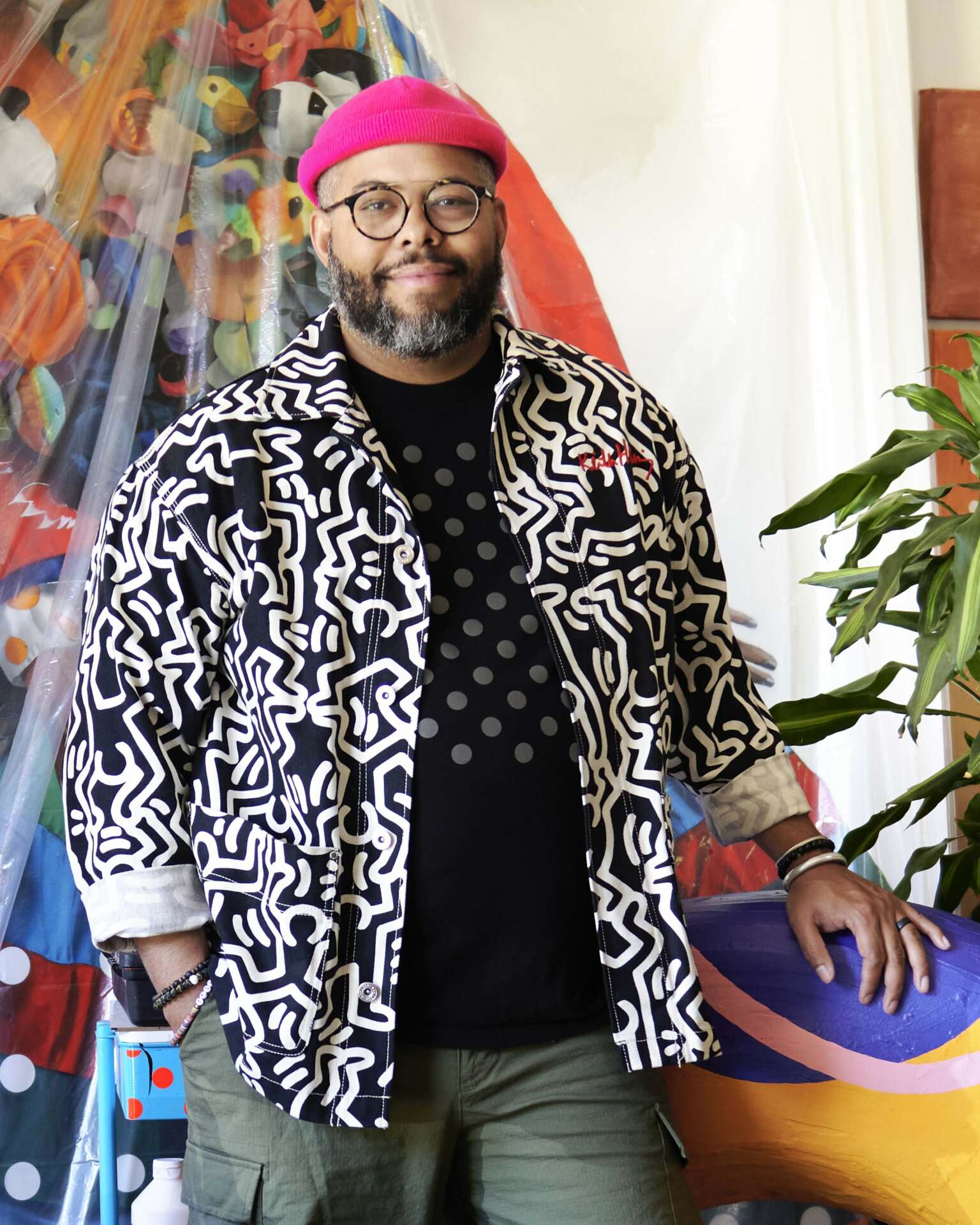We recently connected with Jeremy Biggers and have shared our conversation below.
Jeremy , thanks for taking the time to share your stories with us today We’d love to hear about when you first realized that you wanted to pursue a creative path professionally.
I knew early on I wanted to be an artist, even before I knew being an artist was a legitimate career. My earliest memory of being an artist I was in kindergarten and my teacher gave us a homework assignment over one weekend. She had taken the comics from the Sunday paper and removed the last panel from each strip and asked us to draw what we thought was coming next.
When we returned to school the following Monday I was showing my drawing off before class started saying how easy it was, and everyone else was complaining about how difficult they thought the assignment was. When I saw how much better mine was than everyone else’s I knew I wanted to be an artist.
It wasn’t until much later in life that I realized being an artist was something I could make a living doing, and even later still before I left my day job to make art full time.


Awesome – so before we get into the rest of our questions, can you briefly introduce yourself to our readers.
Here are the bio and artist statement from my website.
Jeremy Biggers is an award-winning creator who has made a name for himself as a painter, muralist, film-maker. He was born and raised in Dallas, Texas, where he attended Booker T Washington High School for the Performing and Visual Arts. It was during this time that he discovered his passion for painting and developed a love for photography, film-making and graphic design, which he later focused on in college.
Since then, Biggers has become known as “Dallas’ hardest working multi-hyphenate” (D Magazine). His work has also been showcased in galleries and exhibitions throughout the country.
Biggers’ artistic vision and versatility have led to partnerships with some of the biggest brands in the world, including IBM, Nike, Adidas, Jordan Brand, McDonalds, Meta, Major League Baseball, Paramount Pictures, Dallas Cowboys, Dallas Mavericks, and Fossil.
Whether he’s working on a canvas, on a wall, or behind a camera, Jeremy Biggers continues to push the boundaries of what it means to be an artist. His passion for his craft and his dedication to his community have made him one of the most respected and admired creators working today.
ARTIST STATEMENT
Jeremy Biggers draws inspiration from his personal experiences and the way they shape his perspective of the world. His artwork explores themes of identity, particularly in relation to his experience as a Black man in America. Through his unique visual language, he employs his signature “hyper-red” color to convey a sense of aspiration and a rejection of complacency.
The dots that are a recurring element in Biggers’ work represent his mother and the ladybugs that visited him after her passing. These symbols hold a deep personal significance for the artist and add an additional layer of meaning to his pieces.
Through his art, Biggers seeks to establish a connection with the viewer, encouraging sincere conversation and facilitating the discovery of new perspectives. His hope is that his work will resonate with the viewer, inspiring them to explore their own identity and gain a deeper understanding of the world around them.
Jeremy Biggers’ artwork is a testament to the power of personal experiences and the ability of art to spark meaningful dialogue and promote personal growth.


Is there something you think non-creatives will struggle to understand about your journey as a creative?
People love to romanticize the “starving artist” trope. Being a creative is the only profession that most people (including some artists) expect you to do simply because you “love it” and not for money. As the popular saying goes, “if you do what you love, you’ll never work a day in your life”. but I challenge that notion, because as a working artist, I work far more hours a day than I ever did at my day job.
Just because you love something, doesn’t mean it’s easy or that it doesn’t take an enormous amount of work.
Making money to survive is the reality for most people, including artists, and it’s never been my intention or aspiration to “starve”.


How can we best help foster a strong, supportive environment for artists and creatives?
I think as a society we need to recontextualize what we consider “art”. When we think “art” we think of the work we see in galleries and museums or at auction, and that work most certainly is one version of art, but art is all around us.
From the phones in our pockets, to the clothes on our backs, to the chairs we’re sitting in, to the cars we drive in, to the roads we commute on, all of it had to start as an idea, and some person had to bring it to life. It’s ALL art.
I think understanding that, reframes artist’s role in society. Art is not just for the aristocratic people who can “afford” it, it’s for EVERYONE. So if you can’t afford to support an artist with your finances, you can share their work with proper credit on social media, or with friends and family and your network.
If social media isn’t your thing, showing up to in person art events, telling your people about the work and for them to come out to openings and other events as well.
All of these make a huge difference in an artist’s career and for some artists is the difference between continuing to make art, or giving up and moving on to something else.


Contact Info:
- Website: http://jeremybiggers.com
- Instagram: stemandthorn
- Twitter: stemandthorn
- Youtube: https://www.youtube.com/@stemandthorn
Image Credits
Portrait – Elizabeth Mary Lavin for D Magazine. All other images taken by Jeremy Biggers


